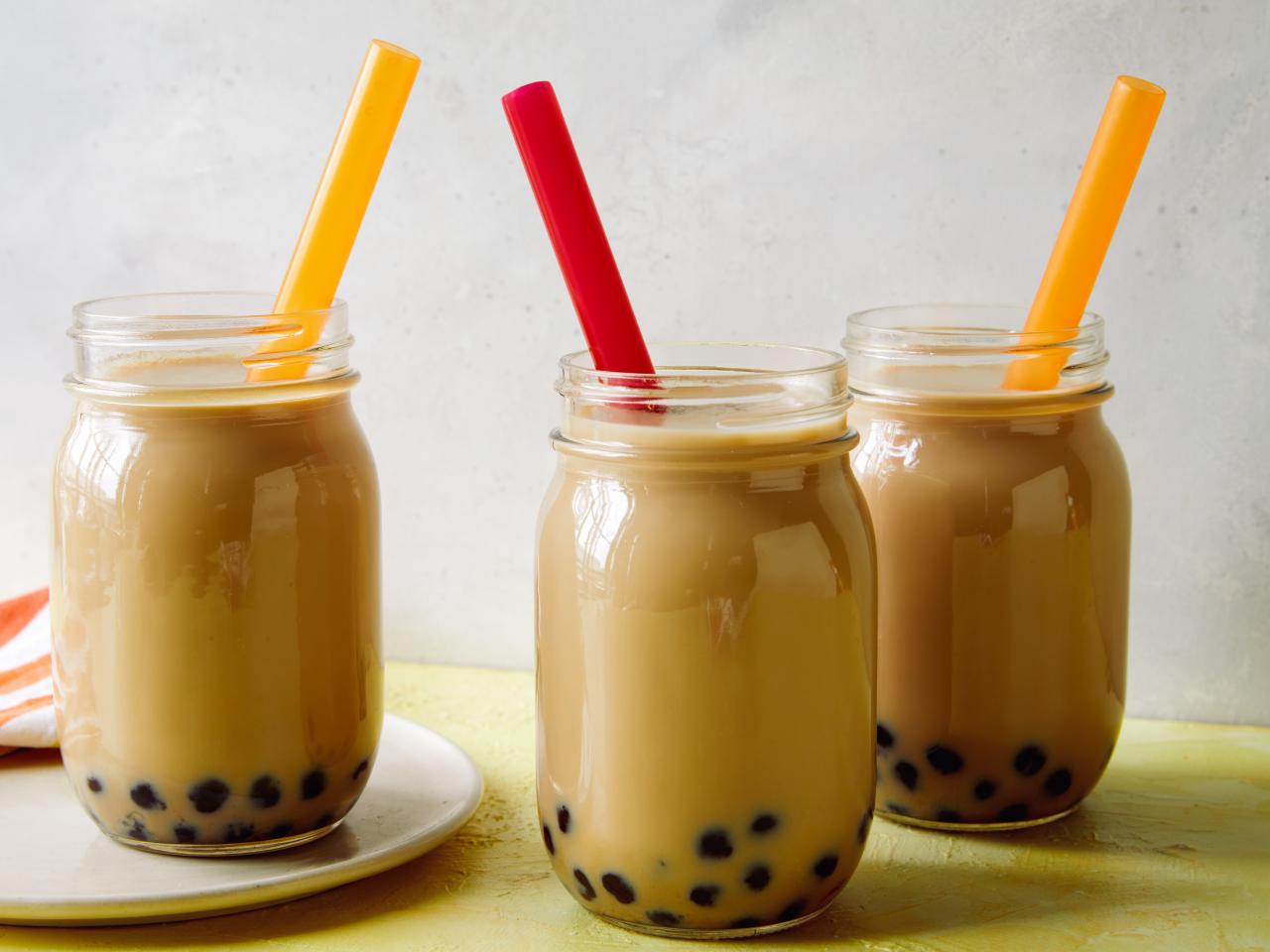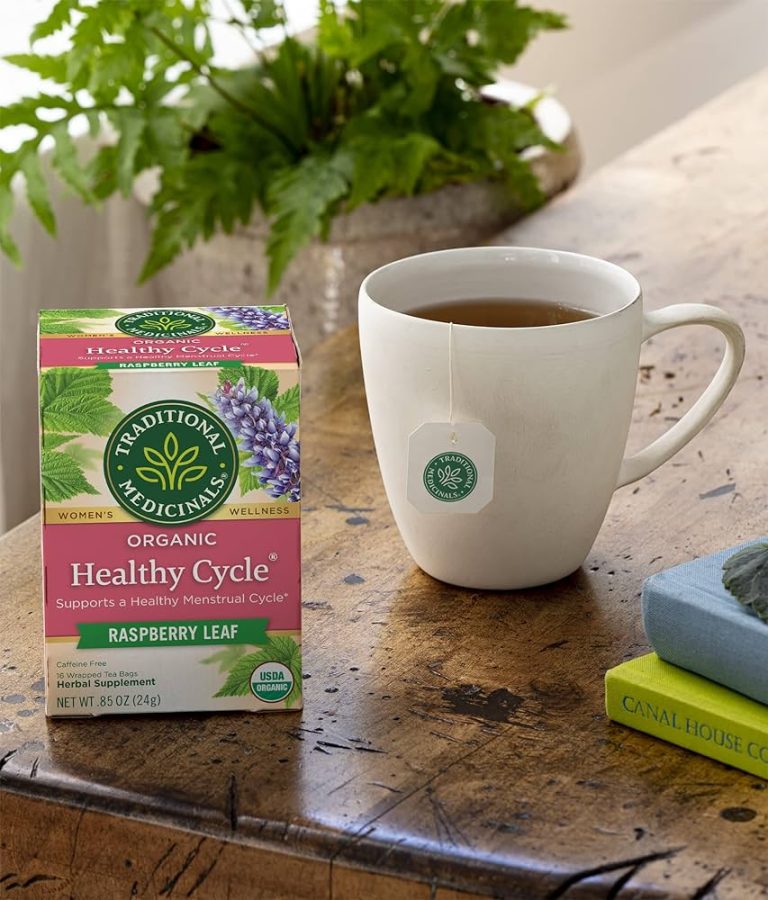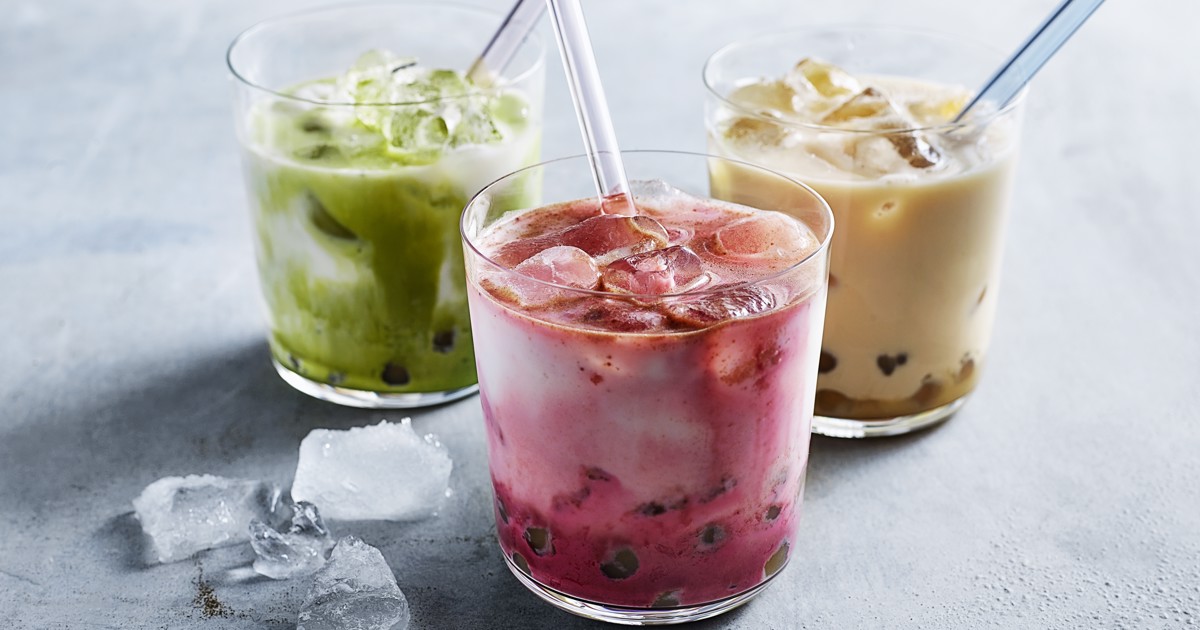
Healthy Bubble Tea
Is Bubble Tea Actually A Healthy Drink Choice
With its chewy tapioca pearls and sweet creaminess, bubble tea is undeniably delicious. This popular Asian drink has people lining up at dedicated bubble tea shops across America.
But many health-conscious folks wonder – can you enjoy this tantalizing tea treat without regret? Or does bubble tea deserve its reputation as an unhealthy guilty pleasure?
Let’s dive into the ingredients, nutrition profile, and health impacts of both classic and customized bubble tea to see if any options make the cut as a healthier beverage.
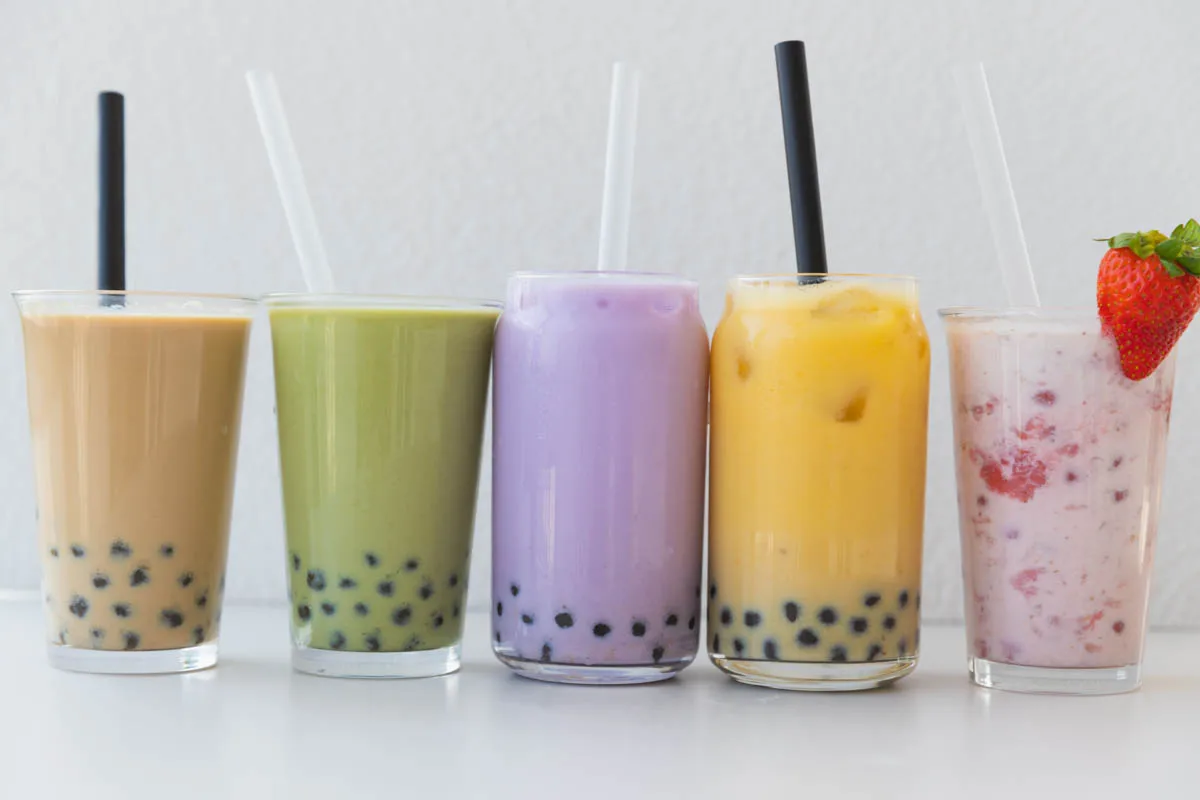
What is Bubble Tea?
Bubble tea originated in Taiwan in the 1980s, though its popularity spread throughout Southeast Asia. The “bubble” refers to the little tapioca pearls cooked from cassava starch mixed into the drink.
These squishy black pearls suck up the tea’s flavor as they soak, providing a fun textural contrast to sipping the drink.
The “tea” simply refers to the base liquid, which is traditionally black tea, green tea, jasmine tea, or oolong tea mixed with milk and sugar. Fruit flavors, juices, coffee, chocolate, and other creative combinations have expanded the bubble tea repertoire.
Customizable with a variety of add-ins, bubble tea has become a versatile drink trend. But those diverse options have variable impacts on nutrition and health.
Nutrition Facts: Classic Bubble Tea Versus Customizations
With so many modification options, the calories and sugar in bubble tea can shift significantly.
Here’s how a typical 12-16oz bubble tea stacks up nutrition-wise:
Classic black milk tea
- 240-320 calories
10-12g fat
45g carbs
36g sugar
Customized with fruit tea, skim milk, no toppings
- 90-140 calories
0g fat
22g carbs
16g sugar
As you can see, choosing a fruity tea base, skimping on toppings, and opting for skim or non-dairy milk slashes calories and sugar versus going classic.
But customization is key – unhealthy toppings like liquid sugar pumps or sugary creamers can quickly sabotage any benefits.
Aim for about 16oz or less at a time, and limit higher sugar drinks to an occasional treat.
Potential Pros: Tea Antioxidants, Milk Nutrients
Despite bubbly tea’s reputation as a junk food drink, it can provide useful antioxidants and nutrients:
Tea antioxidants – Green, black, or oolong tea contains beneficial catechins, theaflavins, and thearubigens that may boost heart health, brain function, immunity and diabetes management.
Milk nutrients – Using 2% or skim milk adds protein, calcium, vitamin D and potassium to help muscles, bones, blood pressure and immunity.
Tapioca starch carbs – The starchy tapioca balls supply quick energy with a fairly low glycemic index of 54.
Probiotics – Some bubble tea shops add probiotic powders or grass jelly with gut-healthy live cultures.
So while no health elixir, bubble tea can supply useful antioxidants, vitamins, minerals, carbohydrates, protein and probiotics when customized wisely.
Potential Cons: Sugar, Fat, Calories, Additives
However, classic bubble tea preparations pose some risks:
- High sugar – With over 30g sugar per drink, excess bubble tea spikes blood sugar and leads to fat storage, weight gain, inflammation and diabetes risk.
- Full fat milk – Whole milk adds unnecessary saturated fat that strains heart health and arteries.
- High calories – At up to 320 calories apiece, frequent bubble tea adds excess energy intake that converts to pounds over time.
- Artificial ingredients – Powdered creamers, artificial syrups, and processed toppings create health concerns.
- Food additives – Some tapioca balls and teas contain preservatives, stabilizers, colors and chemical additives.
- Allergens – Milk-based bubble tea poses problems for the lactose intolerant. Some teas contain trace gluten.
Drinking regular higher sugar and calorie bubble teas often counteracts potential antioxidant benefits with ingredients that strain health in other ways. Moderation is key.
Healthier Bubble Tea Customization Tips
You can enjoy bubble tea more guilt-free by optimizing your customizations:
- Pick fruit-based teas like passionfruit, peach, mango or lychee for flavor over milk and sugar.
- Go for hot tea instead of creamy chilled versions to avoid heavy milks and sweeteners.
- Choose skim or non-dairy milk like almond, coconut or oat milk to slash fat.
- Request half or no sugar – most shops will accommodate lowering the sweetness.
- Skip sugary toppings like flavored jellies, puddings or creamers.
- Try fresh fruit bubbles like strawberry or mango instead of starchy tapioca.
- Add immunity boosting **mix-in supplements** like vitamin C, collagen, wheatgrass or matcha powder.
- Order the small size- limit portions to 8-12oz instead of jumbo 20oz+ cups.
With savvy mix-and-match skills, you can craft a lighter bubble tea tailored to your taste and health goals.
Can Bubble Tea Be Part of a Healthy Lifestyle?
So in the end, is bubble tea good or bad for you? As with most foods, moderation and customization are key.
An occasional classic whole milk bubble tea with toppings provides too much sugar, fat and calories to be considered healthy. But customizable bubble teas prepared with fruit-based teas, skim or non-dairy milk and minimal sweeteners can fit into a balanced diet.
As a special treat in sensible portions, even traditional bubble tea likely poses little harm, though the high sugar content should give pause to anyone watching their weight or diabetes risk.
Making bubble tea a daily habit in large or supersized servings is where health consequences accumulate – packing on pounds, triggering inflammation and wreaking havoc on blood sugar regulation.
Overall, bubble tea lovers can enjoy this whimsical drink in moderation by optimizing customizations for nutrition, minimizing sizes and avoiding daily overconsumption. With mindful moderation and smart tweaks, bubble tea can bubble happily alongside other healthy lifestyle choices.
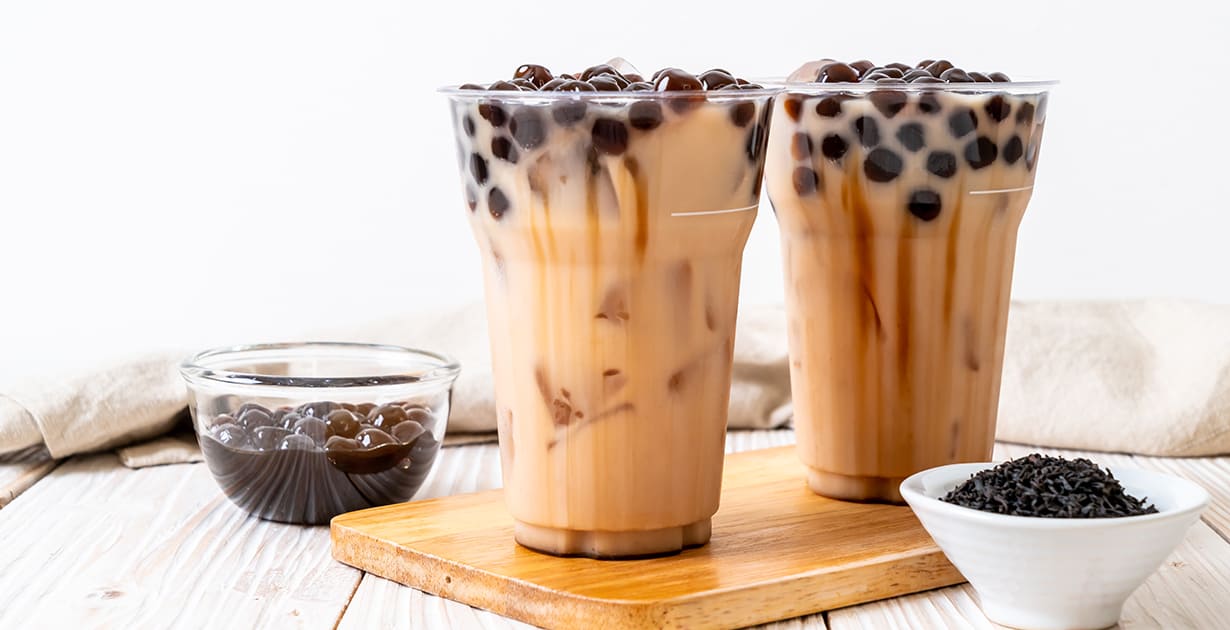
The Evolution of Bubble Tea and How to Make it Nutrient-Rich
In conclusion, the world’s fascination with bubble tea is not just about its delightful taste but also the potential for transforming it into a more nutritious beverage. By embracing healthier alternatives such as low-sugar or natural sweeteners, choosing whole grain or fruit-based pearls, incorporating plant-based milk options, and topping with nutrient-dense fruits or superfoods, we can indulge in our favorite drink without compromising on health.
The journey towards healthier bubble tea isn’t about eliminating the fun and enjoyment; rather, it’s an invitation to innovate and adapt this popular treat to suit contemporary wellness goals. It’s a testament to the power of conscious consumption – where every choice we make, from ingredients to preparation methods, contributes to our overall well-being.
As consumers become more health-conscious and demand transparency in food choices, the bubble tea industry has responded by offering cleaner labels and healthier variations. This shift encourages us to be proactive participants in crafting our beverages, selecting ingredients that are both tasty and beneficial.

